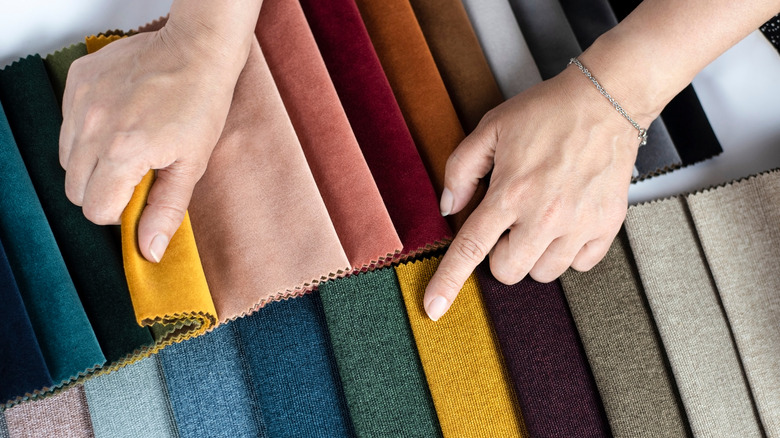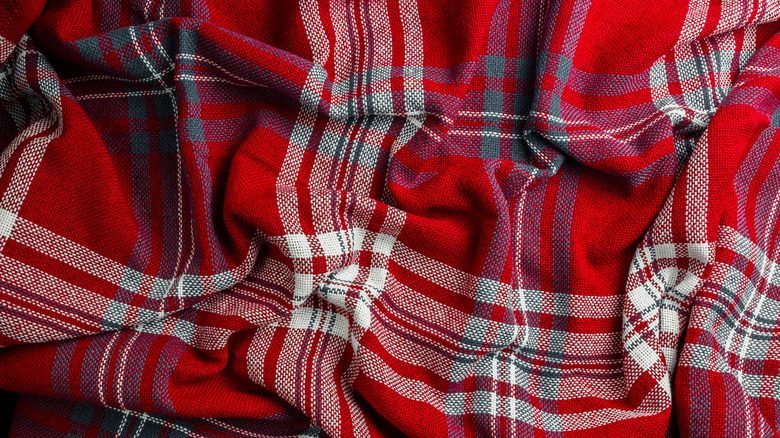The Fabric Pattern You'll Want In Your Home For A Comfortable Feel
Even though we're (hopefully) on the tail end of the COVID-19 pandemic, some of the attitudes and habits we adopted during the ordeal are sure to stick around, the foremost being staying home. Due to lockdowns, social distancing, and stay-at-home orders, we spent more time huddled indoors in the past year than ever before. For some of us, the countless hours spent staring at our own four walls led to a renewed desire to revamp our space.
Always one step ahead of us, Good Housekeeping penned an article detailing the best home décor trends to try out in 2021. The piece predicts the rise of dark hues, knotted light fixtures, edible plants, and even bidets. But for people wanting to incorporate more comfort into their redesign, plaid is apparently the way to go. Chicago-based interior designer Mark Lavender champions the trend, saying, "As people continue to stay at home, plaid and printed fabrics from the last century evoke a sense of comfort and happier times." Here's why it does the trick.
Plaid evokes a sense of nostalgia and timelessness
As far as patterns go, plaid hasn't been in fashion for long. Although it can be traced back to the 1700s, it didn't become hot in the interior design and fashion worlds until the 1970s, per Fabrics and Home. Back when it made its debut, the pattern was called tartan. Scottish weavers used vegetables and any other regional materials they could get their hands on to dye woven cloths. According to home décor blogger Jaime Huffman, "This is how the different colorways of tartan evolved and eventually became associated with particular regional families and clans in the Scottish Highlands." When British and American manufacturers began appropriating and selling the design, they marketed it as "plaid." The pattern grew in popularity until its peak in the '70s. Recently, however, plaid has become a highly sought-after element in interior design, due in part to the nostalgia it brings. But it also carries its own sense of calm and class.
"It's easy to coordinate and is a great way to add texture and color to a room," Huffman says. "Personally, I prefer to use plaid as an accent in more neutral colors like gray and white for a timeless touch. You can make a bold statement by using it as a wallpaper or on an upholstered piece of furniture. And, of course, you can't forget the classic red plaid throw during the Christmas season!"

